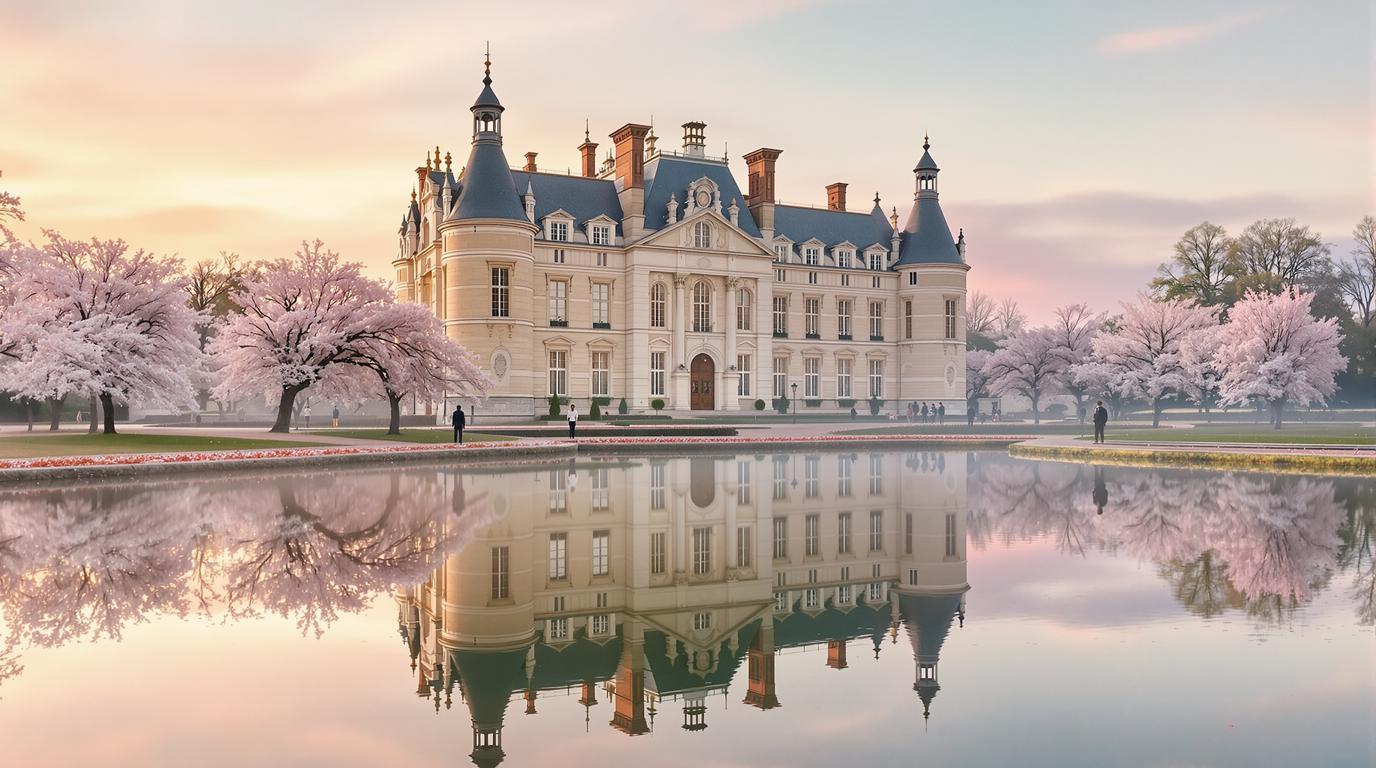At dawn, when Paris still slumbers, the fountains of Parc de Sceaux awaken first – their waters catching the golden light before any tourist has crossed the threshold. This 181-hectare masterpiece lies just 10 kilometers southwest of Paris, yet remains gloriously unspoiled by the crowds that swarm the city’s central attractions. Created by André Le Nôtre, the same genius behind Versailles, this hidden gem rivals its famous cousin with equally stunning geometry and grandeur – but offers something increasingly rare: tranquility.
A royal retreat where cherry blossoms reign
Each April, over 150 Japanese cherry trees transform the northern groves into a pink wonderland during the annual Hanami festival. Unlike San Francisco’s hidden gardens, where misty mornings create a mysterious atmosphere, Sceaux’s cherry blossom spectacle bathes in clear spring light, creating postcard-perfect scenes without the crowds found at Paris’s more famous flowering destinations.
“People think you need to travel to Kyoto for magnificent cherry blossoms, but locals know Sceaux offers equally spectacular views with a fraction of the tourists,” explains Martine Laurent, a botanical guide who leads tours through the park.
The château that became a time capsule
At the heart of the park stands the elegant Château de Sceaux, housing the Musée de l’Île-de-France. While smaller than Renaissance masterpieces with hidden gardens, this neoclassical jewel offers something equally valuable: an intimate glimpse into French aristocratic life. For just €3 (free on first Sundays), visitors can wander through rooms adorned with period furniture and art that chronicles the region’s rich history.
Grand canal reflections that capture the sky
Le Nôtre’s masterful design reaches its zenith at the Grand Canal, where perfectly aligned poplars create mirror images in still waters. Early mornings here rival dawn at other garden masterpieces near Paris – mist hovers just above the water’s surface while photographers capture the play of light across the geometric landscape.
The orangerie’s secret winter garden
When autumn chills Paris, the park’s Orangerie becomes a fragrant sanctuary. Unlike Brazil’s botanical gardens with their tropical abundance, Sceaux’s collection focuses on Mediterranean citrus that once delighted French nobility. Today, these same trees perfume the air with subtle scents that transport visitors to southern provinces.
“The Orangerie represents French garden tradition at its finest – practical beauty that serves both aesthetic and culinary purposes,” notes historian Jacques Bernier. “Kings once impressed guests with citrus when these fruits were worth their weight in gold.”
Summer nights under operatic skies
July transforms the park into a cultural venue with open-air opera performances set against the château backdrop. As dusk falls, arias float across the Grand Canal while picnickers spread blankets on manicured lawns – a quintessentially French experience that combines high culture with outdoor enjoyment.
The woodland trails that time forgot
Beyond the formal gardens, the Duchesse hillside reveals woodland paths where Parisians escape for Sunday strolls. Much like ancient garden traditions being revived elsewhere, these naturalistic sections of the park show how formal French design eventually embraced more relaxed landscapes.
Practical magic: getting there and timing it right
The RER B line from central Paris delivers visitors directly to Parc de Sceaux station in just 20 minutes (€3-5). Spring blooms peak in April, summer brings festivals, autumn foliage burns bright in October, and winter reveals the garden’s elegant bones. The park opens at 7am in summer months, closing at 10pm – but early risers gain the photographer’s advantage of golden light with minimal crowds.
As Paris continues to draw millions with its iconic monuments, Parc de Sceaux offers something increasingly precious: space to breathe, reflect, and experience French cultural heritage without battling selfie sticks. Here, just beyond the city’s edge, Le Nôtre’s vision remains intact – a testament to timeless design that still captivates three centuries after its creation.
